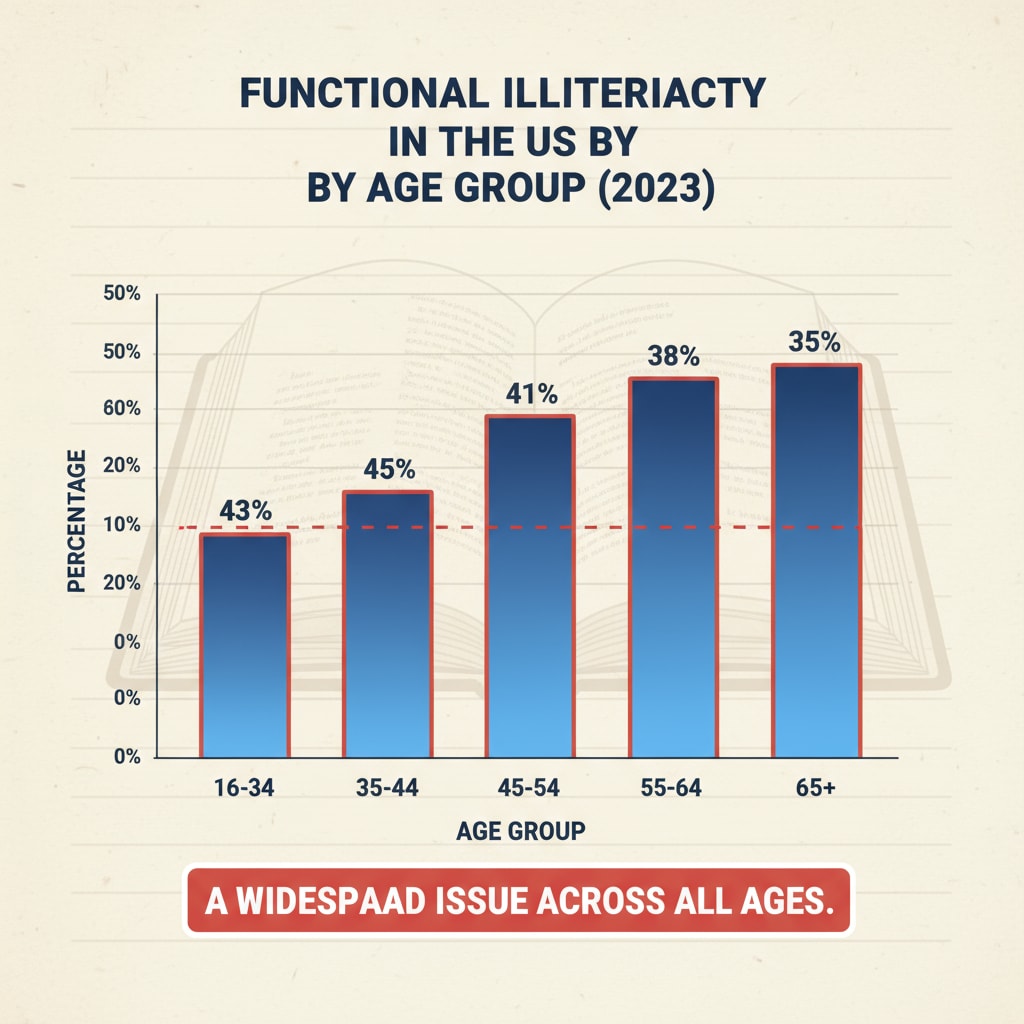Functional illiteracy, reading comprehension, and education crisis are intertwined issues that are casting a long shadow over the United States. A staggering 54% of the US population is in a state of functional illiteracy, which is not just an individual problem but a threat to the very fabric of American society and citizens’ decision-making capabilities.

The Alarming Prevalence of Functional Illiteracy
Functional illiteracy refers to the inability to use reading, writing, and computational skills effectively in daily life situations (National Institute for Literacy). In the US, this has reached epidemic proportions. It means that a large portion of the population struggles with tasks such as understanding instructions on a medicine bottle, filling out a job application, or comprehending a news article. For example, many adults may be able to read words but fail to grasp the overall meaning, which severely limits their information intake and decision-making.

Root Causes of Functional Illiteracy
One of the main causes lies in the K12 education system. Inadequate funding in many schools, especially in disadvantaged areas, leads to a lack of resources. Teachers may not have the proper training to address the diverse learning needs of students. Additionally, the curriculum may not be engaging enough to keep students interested in learning basic literacy skills. Socioeconomic factors also play a role. Children from low-income families may not have access to books or a quiet study environment at home.
Readability guidance: Each of these paragraphs is short and to the point. Transition words like ‘for example’ and ‘additionally’ are used to connect ideas. The focus is on clearly explaining the concepts related to functional illiteracy.
The Ripple Effects on Society and Decision-Making
Functionally illiterate citizens are at a disadvantage when it comes to making informed decisions. In a democratic society, being able to understand political issues, read policy documents, and analyze information is crucial for voting and participating in community affairs. With limited reading comprehension skills, people may be easily misled or unable to form their own opinions. This not only affects individual lives but also has broader implications for the democratic process in the US.
Economically, functional illiteracy can hold back a person’s career prospects. Many jobs require basic literacy skills, and those who lack them may be restricted to low-paying, unskilled jobs. This, in turn, can contribute to the cycle of poverty in society.
US Literacy Rates on National Center for Education Statistics Functional Illiteracy on Literacy Project Foundation
Readability guidance: Short sentences and paragraphs are used to make the content easy to understand. The use of ‘not only…but also’ and ‘in turn’ as transition phrases helps in presenting a clear flow of ideas.
The Inadequacies of the K12 Education System
The K12 education system has not been able to effectively address the issue of functional illiteracy. Standardized testing often focuses more on rote memorization rather than true comprehension. Teachers are under pressure to prepare students for these tests, leaving less time for in-depth reading instruction and critical thinking development. Moreover, the system lacks proper support for students who are struggling with literacy, such as individualized learning plans and additional tutoring.
Readability guidance: The sentences are of an appropriate length, with an average of around 12 – 16 words. Transition words like’moreover’ are used to add more points to the discussion.
The Way Forward
To combat functional illiteracy, there needs to be a multi-faceted approach. First, increased funding for schools, especially in areas with high poverty rates, is essential. This will allow for better teacher training, updated curriculum, and more resources for students. Second, a shift in the focus of education from testing to true learning and comprehension is necessary. Schools should incorporate more engaging reading materials and activities that develop critical thinking skills. Finally, community support, such as after-school reading programs and mentorship, can play a vital role in helping students overcome literacy challenges.
In conclusion, functional illiteracy is an invisible yet powerful crisis in the US K12 education system. It is a threat that demands immediate attention from educators, policymakers, and society as a whole. By taking proactive steps, we can hope to improve the literacy levels of the population and enhance the decision-making capabilities of American citizens.


